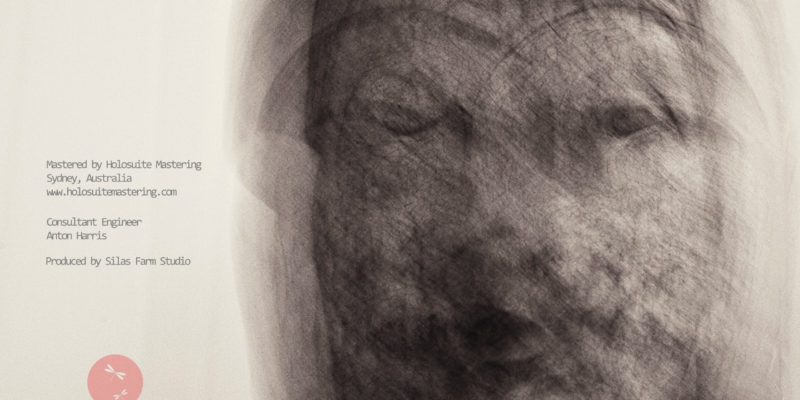Tasmania’s renowned ambient composer and unrivalled creative producer in the electronic, atmospheric realm – Darren Harris gears up to launch his highly-anticipated new album Subliminal.
We got the chance to talk in depth with Darren about the making of the project and the meanings behind the works. We talk about changes in tech and software, mindset and conceptual intentions, past projects, artistic evolution, and plenty more. Here’s the conversation in full.
* * *
Hi Darren, great to catch up – how has 2024 been treating you?
Thanks Rebecca, busy, busy, busy! Always good to catch up again.
Let’s talk about the new album. First the title – a word that comes with a sort of intrigue or even paranoia, but which also suits the healing frequencies and ethereal escapism of precisely this kind of music. When and why did the title Subliminal reach out to you?
The title came to me after I had written the first four tracks, it was only then I could put a name to the feelings I was experiencing and the sounds I was creating. The title Subliminal also related to the inner work I have been doing on myself the past year, uncovering the aware presence of being, the I AM, but at the same time in sleep being aware of these subliminal undercurrents that were somehow very familiar but also foreign – ‘programmed’ by others through early conditioning.
What was your mindset when composing these, and why the choice of Long Ago Fallen Star for the opener?
My mindset when composing these was to make an album that deeply interested me and that could be heard on multiple levels. A surface calm but with a vast deep expanse of subterranean sounds that suggest something preverbal and unconscious.
Long Ago Fallen Star was the first track I wrote for the album. It was a hidden memory when, at 17, I was blown away by first hearing the jazz guitarist Pat Metheny playing on a track called Long Ago Child / Fallen Star and the cosmic explosion in my mind when I heard it.
“And then, in 1986, I was 19 and doing some summer vacation labouring work when I heard on the news about the NASA Challenger disaster with civilian crew on it. The very ending of this track reminds me of the trajectory I witnessed on television, that must have seared in my mind.”
Nearly 40 years later, looking back, that long ago child and the fallen star is me, with the faded naive optimism and trepidation of youth.
Have your leading production tools changed much since we last spoke?
They have changed somewhat since my last album Passages under the side name Ambient Counsel. I brought new hardware synthesisers into my setup to give me warmer analog sounds as a feature. I also studied using the stereo listening field to maximise the expression of the underlying ‘subliminal’ type sounds to create more immersive three dimensional movement and interest.
Dream Angel sees us shift towards a simple instrumental conversation. Two parts both opposed to and connected with one another, later a new tone, a voice even. Was this performed as a live take or built and layered over time?
This track was written fairly quickly and layered in my home studio. First came the two parts, like two energies intertwining, opposing and connecting as you say. It’s like two voices inside us, which one is our natural authentic voice and which one is the voice of ego? Then the grand voice of the dream angel beholds and envelopes both internal voices in a divine apparition of love.
This composition is based on a profoundly moving experience during breath work I undertook a couple of years ago with a skilled 80 year old female practitioner. In the vision I was lifted up and mesmerised by a magnificent angel of light, radiating pure unconditional love. It was a transformative experience indeed.
Conversely, there’s a clear atmospheric depth and crackle to the fascinating Sky Holes. What was the inspiration for this track?
The inspiration for this track was expressing that sense of atmospheric depth, and it was influenced by the work of Brian Eno, and Harold Budd. An alive happening that suggests sky, atmosphere, weather, electricity, without a self-conscious sense of self.
This album is a high-quality speakers or headphones experience, without a doubt. What would be your listening recommendations in terms of setting and equipment?
I have deliberately chosen to make this album a concise immersive experience, capable of being listened to in one sitting, from start to finish. That’s why it is 50 minutes in length. My recommendation is to use quality over-the-ear headphones (as these have a better bass and lower mid-range response) or a decent hi fi system. Dim the lights low, lie down, get comfortable, switch your mind off, and absorb yourself in listening to the album.
Ancient Night is distinctly melodic, dark yet engaging. How different was your mindset and intention when crafting this one?
I like music that drifts, but I also like melodic lines, so that sounds don’t drift to a bland aimlessness lacking any structure or distinguishing feature. Some artists are great at this, but it’s not my mindset or my strength. My favourite composer is Harold Budd, whose ambient music was also strongly melodic. The melodic line in Ancient Night is distinct, it is at the foreground, unlike the four tracks that precede it. It sets a somewhat bright but melancholy mood, and the sinister sounds of the night lurk away underneath it.
The Oxford definition of Subliminal is to affect someone’s mind without their knowing. What effect do you hope or expect this project to have on the mind of its listener?
Firstly to engage the listener with immersive sounds with undercurrents, that help the listener bypass their conscious every day mind. To have a break from conscious control. A bit like when John Lennon sings in Tomorrow Never Knows:
Turn off your mind, relax and float downstream, it is not dying.
Given the complexity of your sound design, the mellow pace and vastness of each work, along with the extensive repertoire, would you be able to pinpoint and title any of your tracks from throughout time, on hearing just a few seconds? Or do you leave a project behind once it’s completed?
Yes I would be able to pinpoint them, but I tend to leave a project behind once I have completed it. This is because that project is a particular expression of where I am at and what I am exploring at the time. If by chance I hear one of my past tracks, say on YouTube, I am struck by the thought how did I do that? I have no idea. And, did I do that? I must have, but who was I then? I have no idea.
“It reminds me of the old Zen saying, you can never step in the same river twice. I love exploring music and the depths of consciousness, two of my favourite things.”
Who else’s music or media have you been listening to / enjoying throughout the past year and during the making of Subliminal ?
Actually I haven’t been listening to much at all. I haven’t had time, I work in Community Development full time, and I have a small private practice in transformational counselling, specialising in trauma, the inner wound, and transforming the wound into the gift, the realisation of aware presence as our essential nature.
Having said that, some of the descending / ascending progressions in some of the tracks pay homage to Aphex Twin’s ambient work, and the trumpet-like sound on Absolving pays homage to the late Jon Hassell.
Beacon leads beautifully into Luminal, almost like two chapters of the same book. What prompted you to choose this closing progression?
Beacon I wrote fairly early and I did not know initially where to place this track on the album, it is bright and hopeful, a beacon of light. As I wrote a few more tracks, I placed it at the end, yet it didn’t feel quite the conclusion. Luminal was the last track I wrote for the album, with the definite intention of it being the closing track.
With Luminal, can you go into a little detail and technicality as to how you built these cascading sounds; which again blend the unnerving and the soothing with precision and intrigue?
The opening bells signal a dream-like state. The cascading sounds are from the Roland System 8 synthesiser. I morph the sound each time they repeat to give that twisting cascade. The descending chord progression mirrors the experience of going from a waking state to a subliminal state. The following rising higher tones mimic light and the breath-like sounds indicate assisted breathing.
“The word luminal means ‘of light’. It is also the brand name of a barbiturate sedative. It’s like post-operative recovery, where we are in and out of different hazy states, but not fully awake or conscious. This track captures the soothing, mellow sensation mixed with the tension of coming out of unconsciousness.”
Is there anything else we should know about this album?
It took exactly one year from writing the first track to approving the final masters. All the photographs on the front and back of the album are taken by me over the past 15 years. I hope the album inspires listeners to explore and expand perception.
Cheers,
Darren.
* * *
Find Darren Harris on Bandcamp, Instagram, Facebook & his Website.

